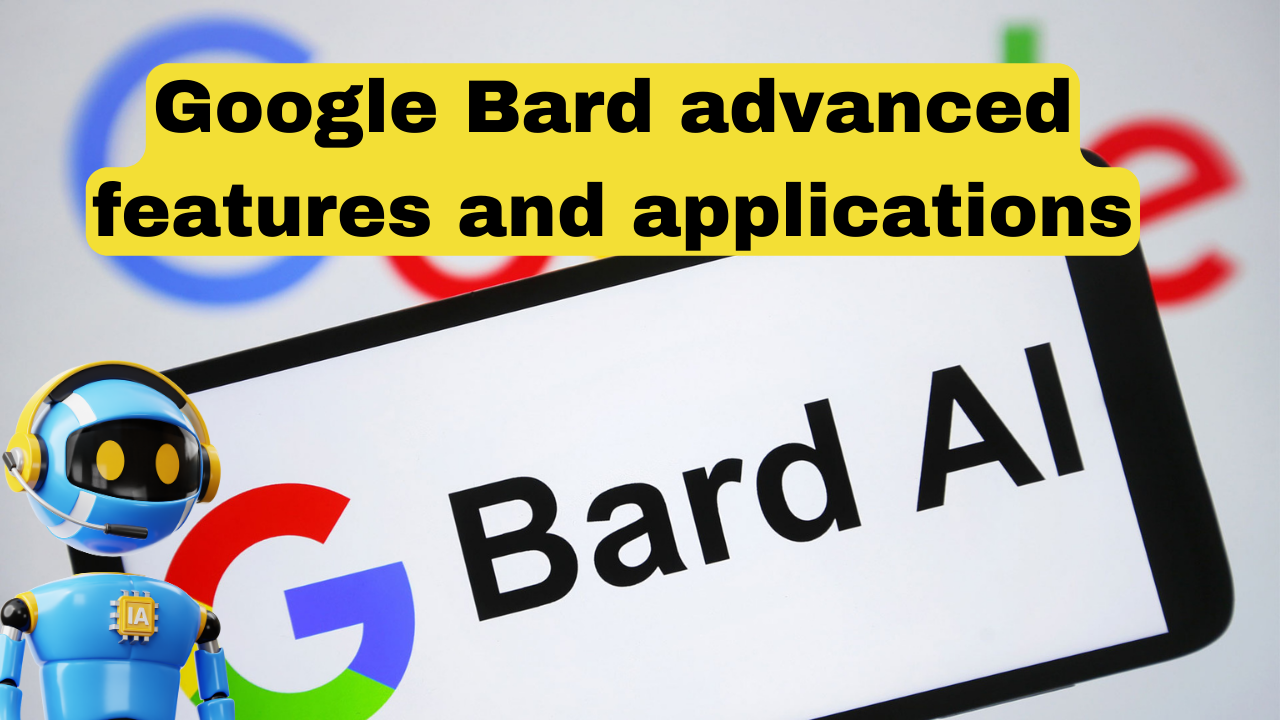Unlocking the Potential of Google Bard: A Deep Dive
Unveiling Bard’s Advanced Features
Ever since Google AI introduced Google Bard, the tech industry has been buzzing with excitement. This latest natural language processing (NLP) model surpasses its predecessors in accuracy and fluency, thanks to its advanced features:
1. Deep Learning Architecture
Google Bard employs a deep learning architecture with multiple layers of neural networks. This sophisticated structure allows it to grasp language nuances more comprehensively.
2. Massive Dataset Training
Trained on an extensive dataset of text and code spanning multiple languages, styles, and genres, Bard can generate human-quality text, translate languages effectively, and adapt to diverse writing styles.
3. Contextual Understanding
Bard goes beyond basic language processing by understanding the context of a conversation or written text. This contextual awareness enables it to provide more relevant and informative responses.
4. Creative Text Generation
One of Bard’s standout features is its ability to generate creative text formats, including poems, code, scripts, musical pieces, emails, and letters. This versatility makes it a valuable tool for writers, artists, and programmers alike.
Exploring Bard’s Diverse Applications
The applications of Bard are far-reaching, promising transformative impacts across various industries:
1. Education
Revolutionize education with Bard by providing personalized learning experiences, generating customized study materials, and offering real-time feedback to students. It can assist educators in developing engaging lesson plans and crafting effective assessments.
2. Customer Service
Enhance customer service by providing multilingual support, handling customer inquiries promptly and efficiently, and resolving issues effectively. Bard can also analyze customer feedback to identify areas for improvement and personalize customer interactions.
3. Creative Writing
Empower writers and content creators by generating fresh ideas, crafting compelling narratives, and producing high-quality content. Overcome writer’s block with Bard's assistance and explore new creative directions.
4. Code Generation
Assist programmers in writing clean, efficient, and well-documented code. Bard can generate code snippets based on natural language descriptions and suggest alternative coding approaches.
5. Information Retrieval
Facilitate information retrieval by summarizing vast amounts of data, extracting key insights from complex documents, and identifying relevant information from various sources.
Real-World Examples of Bard’s Application
Several companies are already harnessing the power of Bard in real-world scenarios:
Google Search
Google is integrating Bard into its search engine to provide more comprehensive and informative search results. Bard analyzes search queries, understands user intent, and generates personalized responses.
Duolingo
Duolingo is leveraging Bard to enhance its language learning platform. Bard provides personalized language lessons, adapts to each learner’s unique needs, and offers real-time feedback for pronunciation and grammar.
Netflix
Netflix is experimenting with Bard to improve its content recommendations. Bard analyzes user preferences, understands viewing trends, and suggests personalized movie and TV show recommendations.
Summary Google Bard advanced features and applications.
Google Bard signifies a significant leap forward in NLP, offering a powerful tool with diverse applications across industries. As Bard evolves, we anticipate more innovative applications. Its ability to understand and generate human language holds immense potential to revolutionize industries and shape the future of technology. Dive into the future of NLP with Google Bard!
Frequently Asked Questions (FAQs): Google Bard advanced features and applications.
1. What is Google Bard?
Google Bard is the latest natural language processing (NLP) model developed by Google AI. It stands out for its advanced features, including a deep learning architecture, massive dataset training, contextual understanding, and creative text generation capabilities.
2. How does Bard's deep learning architecture contribute to its capabilities?
Bard utilizes a deep learning architecture with multiple layers of neural networks. This sophisticated structure allows it to learn and understand language in a more nuanced and comprehensive manner, contributing to its superior accuracy and fluency.
3. What is the significance of Bard's massive dataset training?
Bard has been trained on a massive dataset of text and code encompassing various languages, styles, and genres. This extensive training enables Bard to generate human-quality text, translate languages effectively, and adapt to different writing styles.
4. How does Bard demonstrate contextual understanding?
Unlike basic language processing models, Bard possesses the ability to understand the context of a conversation or written text. This contextual understanding enables Bard to provide more relevant and informative responses.
5. In what ways can Bard contribute to education?
Bard has the potential to revolutionize education by providing personalized learning experiences, generating customized study materials, offering real-time feedback to students, and assisting educators in developing engaging lesson plans.
6. How does Bard enhance customer service?
Bard can enhance customer service by providing multilingual support, handling customer inquiries promptly and efficiently, resolving issues effectively, and analyzing customer feedback to identify areas for improvement.
7. What creative capabilities does Bard have for writers and content creators?
Bard excels at generating creative text formats, including poems, code, scripts, musical pieces, emails, and letters. This makes it a valuable tool for writers, artists, and programmers, helping them overcome writer’s block and explore new creative directions.
8. How can Bard assist programmers in code generation?
Google Bard can assist programmers in writing clean, efficient, and well-documented code. It can generate code snippets based on natural language descriptions and suggest alternative coding approaches.
9. How does Bard contribute to information retrieval?
Bard facilitates information retrieval by quickly summarizing vast amounts of data, extracting key insights from complex documents, and identifying relevant information from various sources.
10. Are there any real-world examples of Bard's application?
Yes, several companies are already exploring the potential of Bard in real-world applications. For example, Google is integrating Bard into its search engine, Duolingo is using Bard to enhance its language learning platform, and Netflix is experimenting with Bard to improve content recommendations.
Have more questions? Feel free to ask for further clarification or information!
Written by: Muktar

























